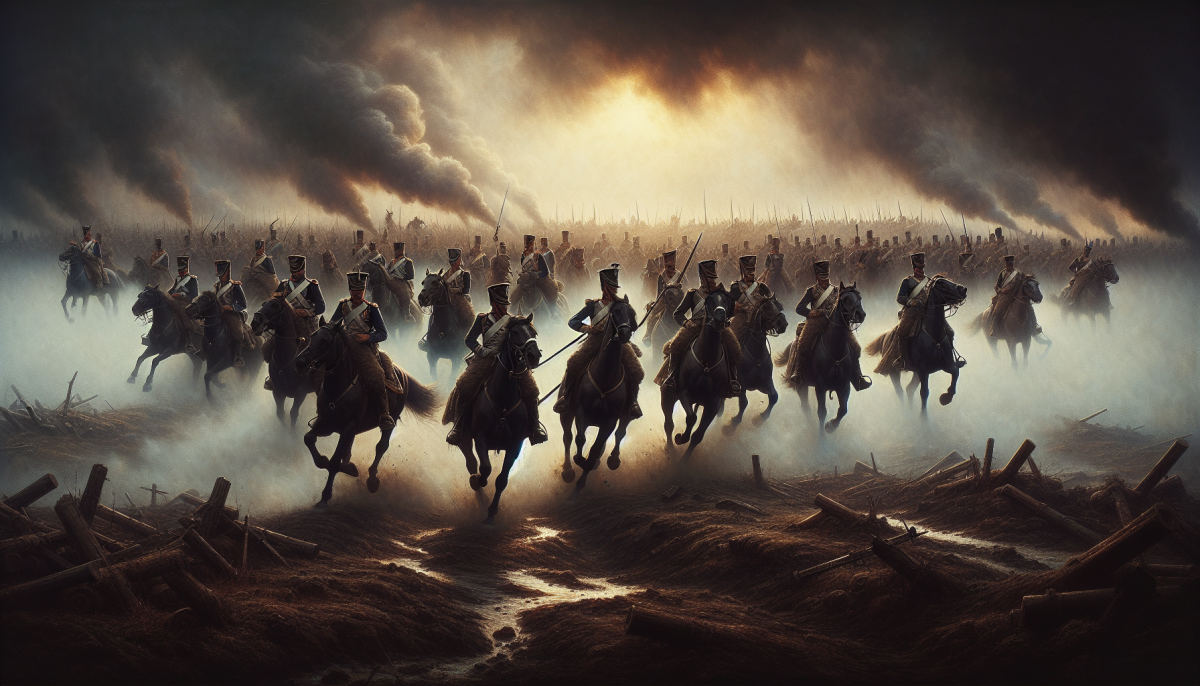The Charge of the Light Brigade: A Masterclass in Futile Heroism
When Courage Meets Catastrophic Miscommunication
In the annals of military history, few events epitomize the phrase “beating a dead horse” quite like the infamous Charge of the Light Brigade during the Crimean War. This spectacular blunder on October 25, 1854, stands as a testament to human stubbornness, miscommunication, and the kind of military decision-making that makes you wonder if the commanders were playing a particularly dark comedy rather than conducting a serious military operation.
Picture the scene: The Crimean Peninsula, a windswept landscape where British, French, and Ottoman forces were battling the Russian Empire. In the midst of the Battle of Balaclava, a series of monumentally confusing orders would transform 670 British cavalrymen into what would become less of a military unit and more of a walking (or rather, riding) punch line of military history.

The day began with the kind of bureaucratic confusion that would make modern middle managers weep. Lord Raglan, the British commander, wanted the cavalry to prevent Russian troops from removing captured Turkish guns. However, his orders were so convoluted that they might as well have been written in an elaborate code designed to confuse even the most astute military strategist.
Enter Lord Lucan and Lord Cardigan, two commanders who seemed to have a relationship more toxic than a reality TV show alliance. Their mutual hatred would play a crucial role in transforming a potential military maneuver into an epic exercise in futility. When Raglan’s orders reached Lucan, they were about as clear as mud after a hurricane.
The order essentially directed the Light Brigade to charge directly into a valley completely surrounded by Russian artillery. In modern terms, this was basically asking 670 men to perform a cavalry charge into what can only be described as the 19th-century equivalent of a kill zone.
As the Light Brigade began their charge, they were essentially riding into what military experts would later call “certain doom” – though at the time, it probably felt more like “spectacular stupidity.”
Russian artillery opened fire from three sides, creating a veritable meat grinder of military incompetence. Cannons boomed, bullets flew, and horses fell in what can only be described as the world’s most lethal game of “cavalry roulette.”
The charge lasted about 20 minutes, but those minutes would be etched into military history forever. Of the 670 men who charged, 110 were killed and 160 were wounded. The casualty rate was so high that it made other military blunders look like precision operations.
Poet Alfred Tennyson would later immortalize this event in his famous poem “The Charge of the Light Brigade,” with the immortal lines: “Theirs not to reason why, theirs but to do and die.” One might argue that “theirs not to think at all” would have been more accurate.
The charge became the ultimate metaphor for futile effort. These soldiers weren’t just beating a dead horse; they were enthusiastically flogging an entire stable of deceased equines while riding straight into oblivion.
Interestingly, the event became a strange point of pride for the British military. Despite being a complete tactical disaster, it was somehow transformed into a celebration of British courage and military honor. It’s the 19th-century equivalent of turning an epic fail into a motivational poster.
Military historians have spent decades analyzing this charge, trying to understand how such a monumentally terrible decision could have been made. The answer, it seems, lies in a perfect storm of miscommunication, ego, and a leadership style that can best be described as “charge first, ask questions never.”
Lord Cardigan survived the charge and was reportedly more concerned about having a good breakfast afterward than the massive loss of life he had just overseen. It’s this level of disconnection that truly elevates the Charge of the Light Brigade from a mere military mistake to a comedic masterpiece of human hubris.
The phrase “beating a dead horse” couldn’t be more perfectly embodied. These soldiers were literally charging into certain death, pursuing an objective that was not only unachievable but monumentally stupid. They weren’t just beating a dead horse; they were performing an entire equine symphony of futility.
Modern military strategists still use this event as a classic example of what not to do in warfare. It’s the ultimate cautionary tale about the dangers of poor communication, ego-driven decision-making, and blindly following orders.
In the end, the Charge of the Light Brigade represents more than just a military blunder. It’s a metaphorical punch line about human nature – our capacity for courage, stupidity, and the bizarre intersection of the two.
So the next time someone tells you that you’re “beating a dead horse,” just smile and say, “At least I’m not charging into a valley of Russian artillery.” Perspective is everything.
